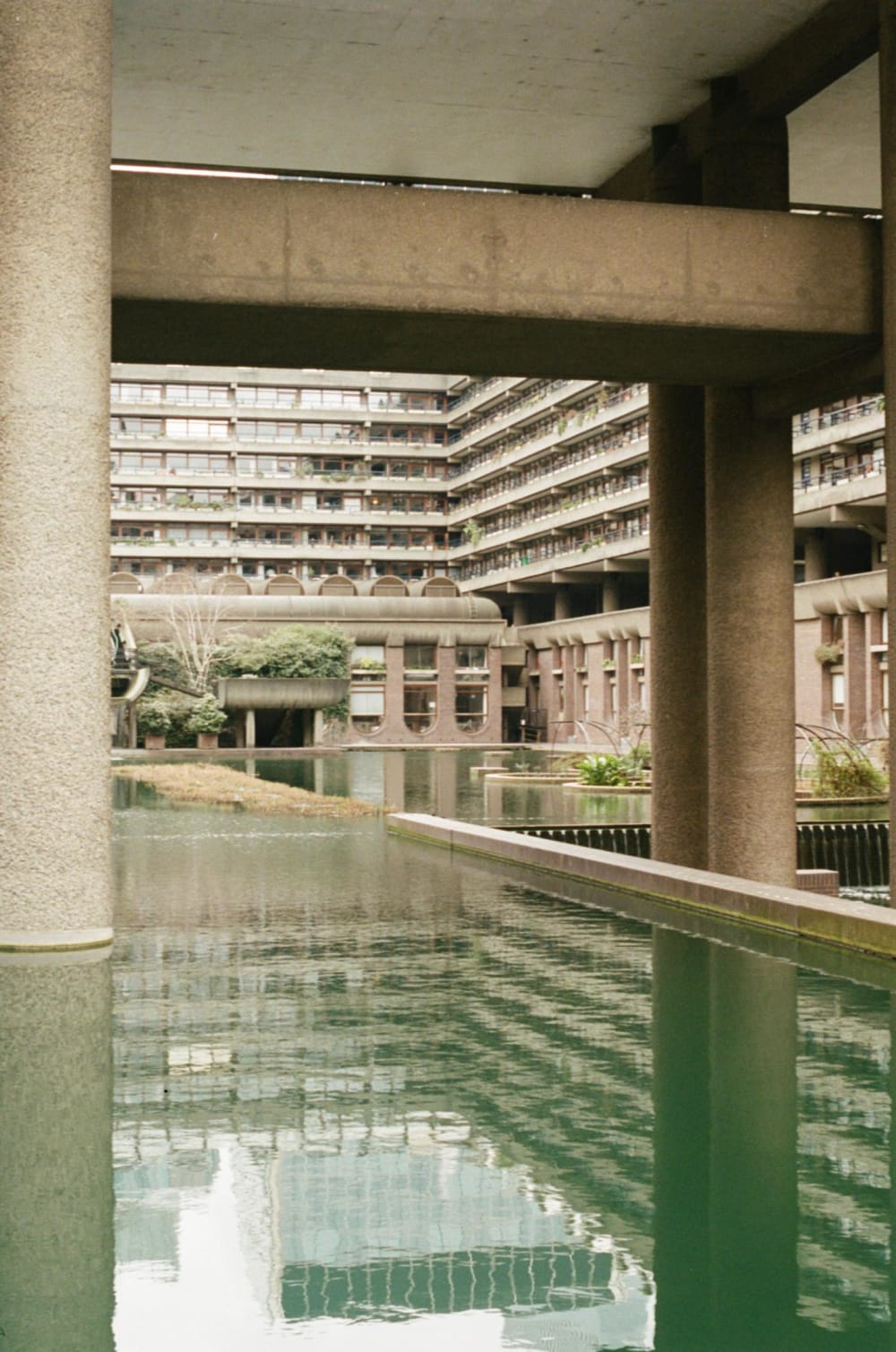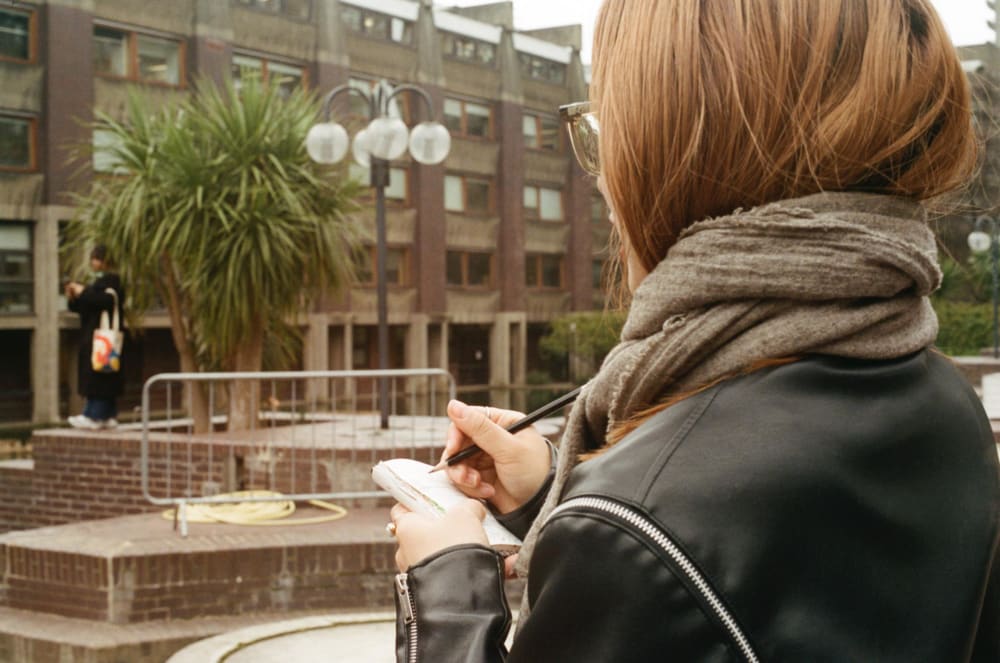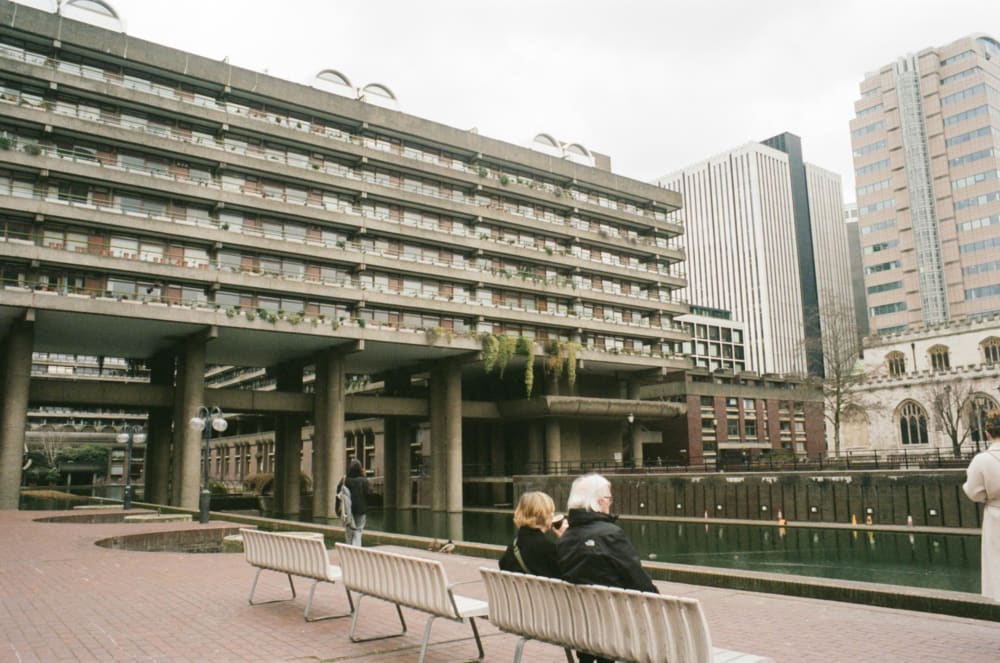
Post-Grad Interest Groups: BrickbyBite explore the Barbican Estate

- Written byAnkita Dhal
- Published date 17 June 2025

Post-Grad Community Ambassador Ankita Dhal (MA Global Collaborative Design Practice, Camberwell College of Arts) and the BrickbyBite Interest Group report back on their their first group gathering, a guided walk from the Barbican to East London.
Our interest group, BrickByBite, hosted its first walk event on March 12th 2025, beginning at the Barbican Estate, followed by Spitalfields Market and concluding at Shoreditch High Street. The aim of the walk was to explore a specific neighbourhood of London on foot with a diverse group of people and get to know each other as we learn about the city. We were delighted to have people join us from various UAL cohorts including MA Global Collaborative Design Practice (GDCP), Graduate Diploma Interior Design, MA Photography and MA Illustration.

The event began with a round of introductions and exploring at the Barbican Centre's Silk Street entrance. The Barbican Estate is one of London’s most striking examples of post-war Brutalist architecture. Developed on a bomb-damaged site in the aftermath of World War II and designed by British architecture firm Chamberlin Powell and Bon, it features a complex multi-level layout built predominantly in raw, textured concrete.
Highlights from our tour included the labyrinth of elevated walkways, the dramatic interplay of light and shadow across its rugged surfaces, and unique details such as hidden bridges and tranquil water features that contribute to a futuristic urban atmosphere within the concrete estate. We then dispersed for some quick solo exploration near the theatre entrance, some of us spent time at the bookstore, some walked with a coffee in hand, while others decided to sketch or engaged in street photography.


As we walked through the estate, we discussed life at the Barbican, imagining how we would feel if we lived there. While we acknowledged the estate as a remarkable achievement in urban planning and architectural design, we agreed that its scale feels unusual for a residential complex—impressive, yet somewhat overwhelming, and perhaps lacking in privacy due to its expansive public spaces. Nevertheless, we appreciated the striking Brutalist elements and the thoughtfully landscaped communal areas.
The Barbican Estate played a significant role in normalising—and arguably encouraging—the use of concrete for large-scale developments during its time. While this ushered in a bold era of architectural experimentation, it also prompts a necessary critique of concrete's environmental impact and long-term sustainability.
One of our attendees, Flavia from MA GCDP brought along a bag of Portuguese cheese bread that served as a welcome hot snack in the cold! We arranged some complimentary postcards from the Barbican store and shared them with the group as memorabilia.

From here we made our way towards Spitalfields Market, encountering an unforeseen hail storm. We used this walk as an opportunity to talk about our own roots and cultural backgrounds, splitting into smaller groups as we navigated the drizzling rain and busy London sidewalks.
Upon arriving at Spitalfields, we discussed its history as a dynamic and changing market complex, taking its name from the hospital and priory, St. Mary’s Spittel which was founded in 1197. With its beginnings in 1666, the market has seen periods of success and decline. Over the years, with no room left for the expansion it needed, the market was forced to relocate in May 1991 from Leyton, East London. At the end of 2005, after 18 years of sensitive preparation, the Spitalfields regeneration programme was completed.
The group spent a considerable amount of time exploring the vintage clothing stores, trinkets, shops and finally regrouping to grab lunch together at the market.

There was a quiet sense of wonder that we shared as new acquaintances exploring the city and unravelling its history together. Our diverse backgrounds called our attention to different sights on the way, leading to wonderfully rich conversations. These unstructured, natural conversations can take up longer than anticipated and hence our last leg of the tour had to be cut short at Shoreditch, as we inched closer to the afternoon. Leaving the exploration of Shoreditch to be unguided and optional for the attendees, Gigi from MA GCDP who resides in the area, provided a quick guide to all the cultural landmarks on Shoreditch High Street and we all dispersed from here on.

We hope to see you at the next BrickByBite event! While BrickByBite is currently on a short hiatus—its founder, Ankita Dhal, is spending a semester abroad at Kyoto Institute of Technology in Japan as part of the Global Collaborative Design Practice (GCDP) program at Camberwell College of Arts—we welcome anyone interested in hosting a city walk in London. If you'd like to get involved, please reach out and email Ankita .
We 've curated some preset routes on our Padlet wall along with suggested readings for the year. Feel free to check them out and share your thoughts!
Post-Grad Stories
Post-Grad Stories is a thriving online platform of postgraduate voices. Here you can share thought-provoking experiences, practices, thoughts and articles about what matters to you.
Download the PDF Guide to writing articles for Post-Grad Stories.
Post-Grad Interest Groups at UAL
UAL’s Post-Grad Community Programme supports a growing number of issue-specific, cross-disciplinary interest groups led by postgraduate students and academics.
These groups connect creatives with shared research/practice interests across different specialisms and subject areas.
Interest Groups are a great way to build new networks at UAL for MA and PhD students with shared interests, a useful tool for finding cross-disciplinary students to work with on planned projects/activities, creating new audiences and ways to formally promote your practice.
Find out more and visit the Interest Group Directory
UAL Post-Grad Community
Established in 2013, Post-Grad Community is an inclusive platform for all UAL postgraduate students to share work, find opportunities and connect with other creatives within the UAL and beyond. Find out more.